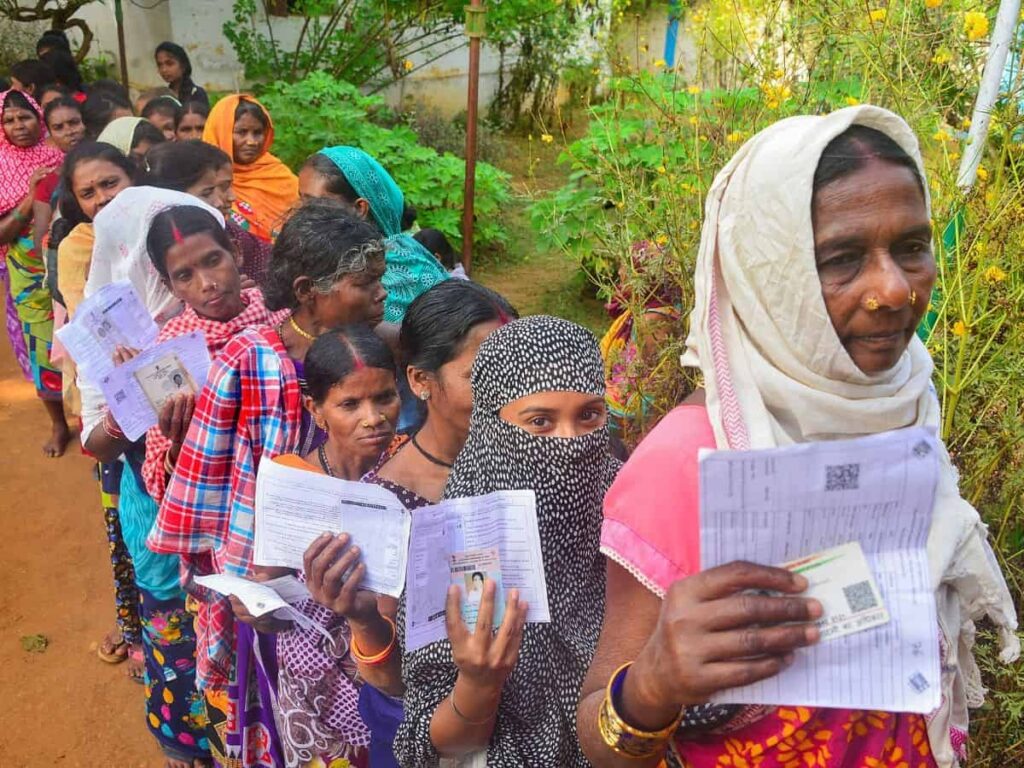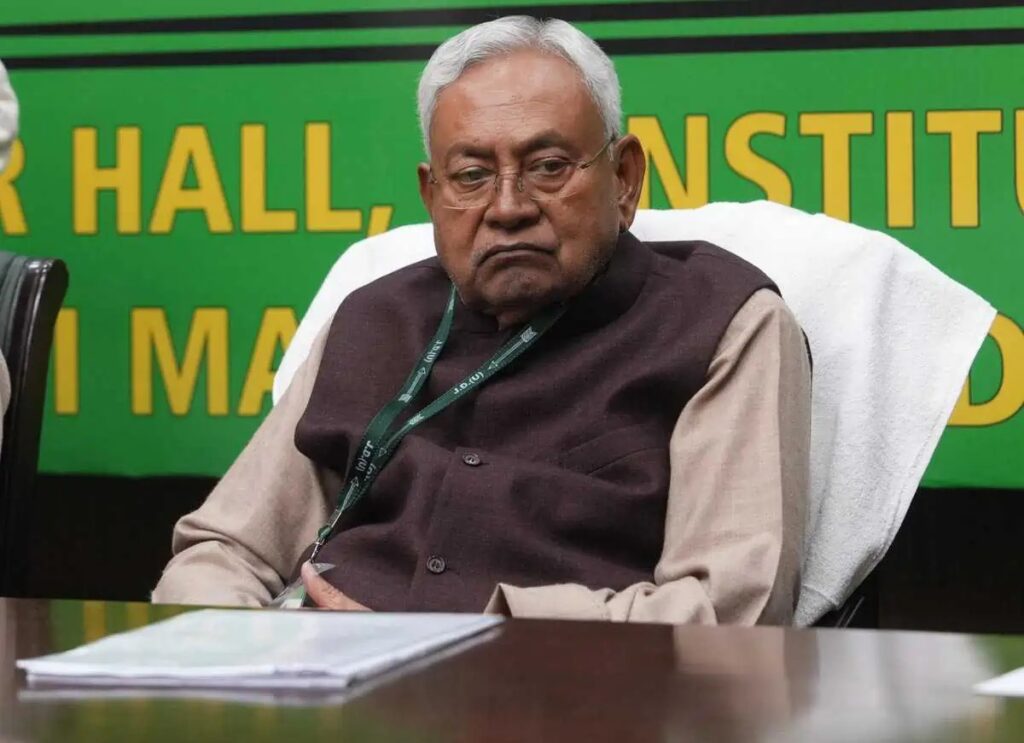
As the voters’ turnout in the first phase of polling for 102 seats this time is lower than that of five state assemblies which went to poll at the height of second wave of Corona Virus in April 2021–not to speak of 2019 election–then summer heat and wedding season cannot be accepted as an excuse. Needless to mention lakhs of people perished in the second wave between April and July three years back. Yet Tamil Nadu registered 72.78% voting then against over 69% for all the 39 constituencies which went to poll on April 19 this time.
The pandemic did not deter the Election Commission from holding this exercise in Assam, West Bengal, Tamil Nadu, Kerala and Puducherry. In West Bengal it was spread to eight phases from March 27 to April 26 and counting took place in all these states on May 2.
Prime Minister Narendra Modi led his party’s campaign by addressing several election rallies—barring the last one on April 22. Yet the turnout was very impressive.

Not to forget about the local bodies poll in Uttar Pradesh that too was held during the same period. Since 2004 all the parliamentary elections have been held in April-May, not to speak of Assembly polls in between.

The argument of soaring temperature does not hold much water. In such a case Britain should not have election in the chilly winter of December as last time.
Lack of enthusiasm
In such a situation the lack of any perceptible wave and new element as well as the decline in Narendra Modi ‘magic’ may be the factors responsible for the low voters’ turnout in the first phase of polling.

In the absence of any serious issue—for example the newness of Narendra Modi in 2014 and nationalistic fervour in the aftermath of Pulwama and Balakot developments in 2019—it is the candidates, caste-equation at the constituency-level and the role of regional satraps which acquire more significance. On this count the Bharatiya Janata Party is found wanting, except in Uttar Pradesh and to some extent in Maharashtra and Assam. In the states like Madhya Pradesh, Rajasthan, Chhattisgarh, Gujarat, Karnataka, Odisha, Jharkhand, West Bengal, Bihar etc. the BJP had to totally rely on the same hackneyed
horse (Modi). The new chief ministers of MP, Rajasthan, Chhattisgarh as well as that of Gujarat do not have any hold whatsoever in their respective states.
In the states where the BJP is out of power it is only in Tamil Nadu that it can boast of having an influential state level leader. Though the party has to go a long way, it at least has in K Annamalai a leader of some stature.
The Janata Dal (United)’s Nitish Kumar in Bihar has now become a liability, rather than an asset. This has become evident after his absence from Modi’s April 16 election rallies in Gaya and Purnea, though in the first two trips of the PM Nitish shared dais with him. It is said that Modi is somewhat upset after Nitish’s outlandish claim of NDA winning 4000 seats in the previous rally in Nawada.

Examples of 2009, 1999
Contrary to this take the example of 2009 Lok Sabha poll when the BJP was down in the dump all over the country and could win only 114 seats. Its PM face Lal Krishna Advani lost all his hold over the party after his June 2005 praise of Pakistan’s founder Mohammad Ali Jinnah during the visit to the country of his birth.
Yet the National Democratic Alliance won 32 out of 40 seats in Bihar, simply because Nitish’s popularity was at its peak then. Had the BJP alone contested in all the 40 seats it would not have won even four.
The example of 1999 post-Kargil Lok Sabha poll is also significant. Though the nationalistic fervour helped BJP-led NDA to come to power again the saffron party’s tally remained the same 182 as in the 1998 parliamentary poll. But in undivided Uttar Pradesh it could win only 29 seats in 1999 against 58 in 1998 election (out of total 85).
Curiously, UP (Uttarakhand was then its part) was among the states from where highest number of military personnel got gallantry awards in that war. Yet the saffron party performed disastrously here thanks to the cold war between Prime Minister Atal Bihari Vajpayee and state CM, Kalyan Singh. Immediately after the election the BJP got rid of Kalyan and he never became chief minister after that development. But he as the regional satrap proved that he had the potential to damage the party’s prospect.
The scenario in 2024
Though it is difficult to say as to which social group showed disinterestedness in poll in north India in the first phase it is a fact that tension among Rajputs, Gujjars and Jats in UP and virtual absence of upper caste leadership in Bihar unit of the saffron party failed to motivate its supporters hailing from this section of the society. These are the castes in these two states on which BJP relies heavily.
The situation in opposition camp in Bihar too is not very different, but it at least has young Tejashwi Prasad Yadav to generate some interest in his own vote-bank. While in UP Ram Mandir did work as a vote-catching factor—albeit at the limited level– in some constituencies, in Bihar the case was not so in the four parliamentary constituencies which went to poll. Nawada registered just 41% votes.

What is of concern in UP and Rajasthan is that in a few seats the fall in voters’ turnout was something between 10 and 12 per cent in comparison to 2019. Was it simply due to lack of enthusiasm or some factor which kept the electorate away from coming to booths?
Central leadership is responsible
None other than the top leadership of the BJP is responsible for sudden disappearance of the second rung leadership. It deliberately cut to size Sushil Kumar Modi (now ailing) in Bihar, Shivraj Singh Chauhan in Madhya Pradesh, Vasundhara Raje Scindia in Rajasthan, Raman Singh in Chhattisgarh, Devendra Fadnavis in Maharashtra. Even Rajnath Singh and Nitin Gadkari have been ignored.
In such a scenario the hardcore supporters of the BJP may not cross over to vote for INDIA candidates, but they may not turn up to vote for its otherwise favourite party, the BJP. This is perhaps the main factor behind low turnout in some places. At the same time, it has been alleged that in some remote places police prevented the supporters of the opposition parties from exercising their adult franchise. However, this charge needs to be further examined objectively.
In contrast the Congress is not only relying on Rahul Gandhi, Priyanka Gandhi and Mallikarjun Kharge but on the regional leaders like Telangana chief minister Revanth Reddy, his Karnataka counterpart Siddharamaiah and his deputy D K Shiva Kumar as well as on alliance partners Sharad Pawar of Nationalist Congress Party and Uddhav Thackeray of Shiv Sena. The BJP on its part has made the leaders of the breakaway factions of Shiv Sena and NCP, Eknath Shinde and Ajit Pawar largely insignificant. In such a situation one can only keep one’s fingers crossed so far as rise in voters’ turnout in next six
phases are concerned.
